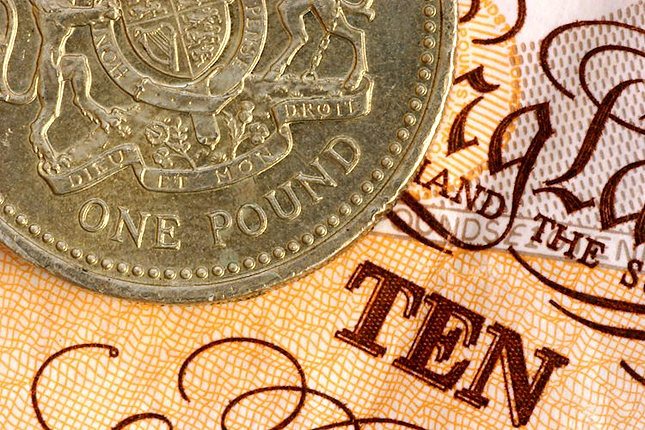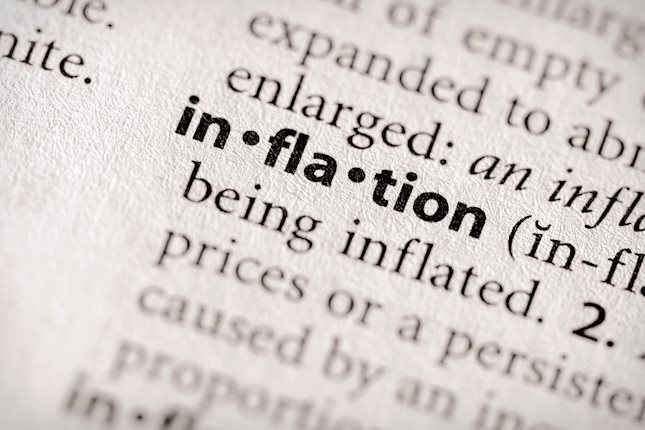- GBP/JPY faces challenges as US President-elect Donald Trump's renewed tariff threats have dampened market sentiment.
- The Pound Sterling may gain ground due to the hawkish mood surrounding the BoE policy decision next month.
- BoE Deputy Governor Lombardelli requires more evidence of easing inflation before supporting another rate cut.
GBP/JPY continues its losing streak for the fifth successive session, trading around 191.10 during the European hours on Wednesday. Investors will focus on the Tokyo Consumer Price Index (CPI) data for October, which will be published on Friday.
The downside risk for the GBP/JPY cross appears due to the increased risk aversion following US President-elect Donald Trump's renewed tariff threats, which have dampened market sentiment, contributing support for the safe-haven Japanese Yen (JPY).
However, the upside of the JPY could be retrained as traders dial back expectations for the Bank of Japan (BoJ) to hike interest rates in December. Market participants expect that political uncertainty in Japan limits BoJ’s potential for raising its key borrowing rates further.
Last week, BoJ Governor Kazuo Ueda hinted last week at the possibility of another interest rate hike as early as December. Japanese Prime Minister Shigeru Ishiba said on Tuesday that he would ask companies to implement significant wage hikes at the annual "Shuntō" negotiations next spring.
The downside of the GBP/JPY cross could be limited as the Pound Sterling (GBP) receives support from reduced expectations that the Bank of England (BoE) will cut interest rates in December. Most BoE policymakers favor a gradual approach to easing monetary policy. Bank of England’s Financial Stability Report will be eyed on Friday.
BoE Deputy Governor Clare Lombardelli stated on Tuesday that she needs to see further evidence of cooling price pressures before endorsing another interest rate cut. Lombardelli also noted that US trade tariffs pose a potential risk to economic growth, though it is too early to fully gauge their impact.
Central banks FAQs
Central Banks have a key mandate which is making sure that there is price stability in a country or region. Economies are constantly facing inflation or deflation when prices for certain goods and services are fluctuating. Constant rising prices for the same goods means inflation, constant lowered prices for the same goods means deflation. It is the task of the central bank to keep the demand in line by tweaking its policy rate. For the biggest central banks like the US Federal Reserve (Fed), the European Central Bank (ECB) or the Bank of England (BoE), the mandate is to keep inflation close to 2%.
A central bank has one important tool at its disposal to get inflation higher or lower, and that is by tweaking its benchmark policy rate, commonly known as interest rate. On pre-communicated moments, the central bank will issue a statement with its policy rate and provide additional reasoning on why it is either remaining or changing (cutting or hiking) it. Local banks will adjust their savings and lending rates accordingly, which in turn will make it either harder or easier for people to earn on their savings or for companies to take out loans and make investments in their businesses. When the central bank hikes interest rates substantially, this is called monetary tightening. When it is cutting its benchmark rate, it is called monetary easing.
A central bank is often politically independent. Members of the central bank policy board are passing through a series of panels and hearings before being appointed to a policy board seat. Each member in that board often has a certain conviction on how the central bank should control inflation and the subsequent monetary policy. Members that want a very loose monetary policy, with low rates and cheap lending, to boost the economy substantially while being content to see inflation slightly above 2%, are called ‘doves’. Members that rather want to see higher rates to reward savings and want to keep a lit on inflation at all time are called ‘hawks’ and will not rest until inflation is at or just below 2%.
Normally, there is a chairman or president who leads each meeting, needs to create a consensus between the hawks or doves and has his or her final say when it would come down to a vote split to avoid a 50-50 tie on whether the current policy should be adjusted. The chairman will deliver speeches which often can be followed live, where the current monetary stance and outlook is being communicated. A central bank will try to push forward its monetary policy without triggering violent swings in rates, equities, or its currency. All members of the central bank will channel their stance toward the markets in advance of a policy meeting event. A few days before a policy meeting takes place until the new policy has been communicated, members are forbidden to talk publicly. This is called the blackout period.
Information on these pages contains forward-looking statements that involve risks and uncertainties. Markets and instruments profiled on this page are for informational purposes only and should not in any way come across as a recommendation to buy or sell in these assets. You should do your own thorough research before making any investment decisions. FXStreet does not in any way guarantee that this information is free from mistakes, errors, or material misstatements. It also does not guarantee that this information is of a timely nature. Investing in Open Markets involves a great deal of risk, including the loss of all or a portion of your investment, as well as emotional distress. All risks, losses and costs associated with investing, including total loss of principal, are your responsibility. The views and opinions expressed in this article are those of the authors and do not necessarily reflect the official policy or position of FXStreet nor its advertisers. The author will not be held responsible for information that is found at the end of links posted on this page.
If not otherwise explicitly mentioned in the body of the article, at the time of writing, the author has no position in any stock mentioned in this article and no business relationship with any company mentioned. The author has not received compensation for writing this article, other than from FXStreet.
FXStreet and the author do not provide personalized recommendations. The author makes no representations as to the accuracy, completeness, or suitability of this information. FXStreet and the author will not be liable for any errors, omissions or any losses, injuries or damages arising from this information and its display or use. Errors and omissions excepted.
The author and FXStreet are not registered investment advisors and nothing in this article is intended to be investment advice.
Recommended content
Editors’ Picks

EUR/USD regains 1.0500 and beyond as US Dollar wilts ahead of data
EUR/USD is extending the rebound above 1.0500 in the European session on Wednesday. Traders cash in on the US Dollar long positions ahead of a series if top-tier US data, lifting the pair. The USD/JPY sell-off also adds to the US Dollar downside.

GBP/USD holds gains near 1.2600, US PCE data eyed
GBP/USD extends the bullish momentum to trade near 1.2600 in European trading on Wednesday. The pair remains underpinned by a sustained US Dollar weakness and risk-off sentiment as traders turn cautious ahead of top-tier US data releases.

Gold price climbs above $2,650 on trade war concerns, sliding US bond yields and softer USD
Gold price sticks to modest intraday gains near a two-day high, above the $2,650 level, through the first half of the European session as geopolitical risks and US President-elect Donald Trump's tariff plans drive haven flows for the second straight day.

US core PCE inflation set to hold steady, raising doubts on further Federal Reserve rate cut
The United States Bureau of Economic Analysis (BEA) is set to release the Personal Consumption Expenditures (PCE) Price Index data for October on Wednesday at 13:30 GMT.

Eurozone PMI sounds the alarm about growth once more
The composite PMI dropped from 50 to 48.1, once more stressing growth concerns for the eurozone. Hard data has actually come in better than expected recently – so ahead of the December meeting, the ECB has to figure out whether this is the PMI crying wolf or whether it should take this signal seriously. We think it’s the latter.

Best Forex Brokers with Low Spreads
VERIFIED Low spreads are crucial for reducing trading costs. Explore top Forex brokers offering competitive spreads and high leverage. Compare options for EUR/USD, GBP/USD, USD/JPY, and Gold.